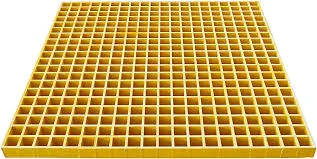
-
 Afrikaans
Afrikaans -
 Albanian
Albanian -
 Amharic
Amharic -
 Arabic
Arabic -
 Armenian
Armenian -
 Azerbaijani
Azerbaijani -
 Basque
Basque -
 Belarusian
Belarusian -
 Bengali
Bengali -
 Bosnian
Bosnian -
 Bulgarian
Bulgarian -
 Catalan
Catalan -
 Cebuano
Cebuano -
 China
China -
 China (Taiwan)
China (Taiwan) -
 Corsican
Corsican -
 Croatian
Croatian -
 Czech
Czech -
 Danish
Danish -
 Dutch
Dutch -
 English
English -
 Esperanto
Esperanto -
 Estonian
Estonian -
 Finnish
Finnish -
 French
French -
 Frisian
Frisian -
 Galician
Galician -
 Georgian
Georgian -
 German
German -
 Greek
Greek -
 Gujarati
Gujarati -
 Haitian Creole
Haitian Creole -
 hausa
hausa -
 hawaiian
hawaiian -
 Hebrew
Hebrew -
 Hindi
Hindi -
 Miao
Miao -
 Hungarian
Hungarian -
 Icelandic
Icelandic -
 igbo
igbo -
 Indonesian
Indonesian -
 irish
irish -
 Italian
Italian -
 Japanese
Japanese -
 Javanese
Javanese -
 Kannada
Kannada -
 kazakh
kazakh -
 Khmer
Khmer -
 Rwandese
Rwandese -
 Korean
Korean -
 Kurdish
Kurdish -
 Kyrgyz
Kyrgyz -
 Lao
Lao -
 Latin
Latin -
 Latvian
Latvian -
 Lithuanian
Lithuanian -
 Luxembourgish
Luxembourgish -
 Macedonian
Macedonian -
 Malgashi
Malgashi -
 Malay
Malay -
 Malayalam
Malayalam -
 Maltese
Maltese -
 Maori
Maori -
 Marathi
Marathi -
 Mongolian
Mongolian -
 Myanmar
Myanmar -
 Nepali
Nepali -
 Norwegian
Norwegian -
 Norwegian
Norwegian -
 Occitan
Occitan -
 Pashto
Pashto -
 Persian
Persian -
 Polish
Polish -
 Portuguese
Portuguese -
 Punjabi
Punjabi -
 Romanian
Romanian -
 Russian
Russian -
 Samoan
Samoan -
 Scottish Gaelic
Scottish Gaelic -
 Serbian
Serbian -
 Sesotho
Sesotho -
 Shona
Shona -
 Sindhi
Sindhi -
 Sinhala
Sinhala -
 Slovak
Slovak -
 Slovenian
Slovenian -
 Somali
Somali -
 Spanish
Spanish -
 Sundanese
Sundanese -
 Swahili
Swahili -
 Swedish
Swedish -
 Tagalog
Tagalog -
 Tajik
Tajik -
 Tamil
Tamil -
 Tatar
Tatar -
 Telugu
Telugu -
 Thai
Thai -
 Turkish
Turkish -
 Turkmen
Turkmen -
 Ukrainian
Ukrainian -
 Urdu
Urdu -
 Uighur
Uighur -
 Uzbek
Uzbek -
 Vietnamese
Vietnamese -
 Welsh
Welsh -
 Bantu
Bantu -
 Yiddish
Yiddish -
 Yoruba
Yoruba -
 Zulu
Zulu
cpvc frp pipe
Understanding CPVC and FRP Pipes A Comprehensive Overview
In today's industrial and commercial landscapes, the demand for efficient, durable, and cost-effective piping solutions has never been greater. Among the myriad of options available, CPVC (Chlorinated Polyvinyl Chloride) and FRP (Fiberglass Reinforced Plastic) pipes have emerged as popular choices for various applications. This article delves into the characteristics, advantages, and applications of CPVC and FRP pipes, providing a comprehensive overview for those considering these materials for their piping needs.
What is CPVC?
Chlorinated Polyvinyl Chloride, or CPVC, is a thermoplastic produced by chlorinating polyvinyl chloride (PVC). This modification improves its properties, allowing it to withstand higher temperatures and pressures compared to standard PVC. CPVC pipes are widely used in hot and cold water distribution systems, especially in residential and commercial plumbing. They are especially favored in industries requiring superior corrosion resistance due to their ability to withstand aggressive chemicals and acidic substances.
One of the key advantages of CPVC is its excellent thermal resistance, allowing it to operate effectively in environments with temperatures up to approximately 200°F (93°C). Additionally, CPVC is lightweight, making transportation and installation simpler and more cost-effective. Its smooth internal surface also minimizes friction loss, contributing to efficient fluid flow and lower overall energy costs.
What is FRP?
Fiberglass Reinforced Plastic, or FRP, consists of a plastic matrix reinforced with glass fibers. This combination results in a material with high strength-to-weight ratios, making FRP pipes suitable for a variety of demanding applications. FRP is particularly advantageous in situations involving corrosive materials, as the fiberglass offers exceptional resistance to chemical attack and environmental degradation.
One of the outstanding features of FRP pipes is their ability to handle extreme temperature variations and pressures. They can be manufactured to meet specific engineering requirements, allowing for versatile applications in industries such as oil and gas, chemical processing, sewage and wastewater treatment, and more.
Benefits of CPVC and FRP Pipes
Both CPVC and FRP pipes come with a host of benefits that make them attractive options in the piping sector.
cpvc frp pipe

1. Corrosion Resistance Both materials are highly resistant to corrosion and chemical damage, making them ideal for environments where traditional metal pipes would fail.
2. Longevity With life expectancies often exceeding 50 years, CPVC and FRP pipes provide a reliable solution with lower replacement costs over time.
3. Cost-Effectiveness Despite an initial investment, the long-term savings associated with reduced maintenance and replacement efforts make both CPVC and FRP pipes financially sound choices.
4. Sustainability As industries lean towards sustainable solutions, both CPVC and FRP pipes can be produced with minimal environmental risk and can contribute to lower energy consumption due to their efficient design.
5. Lightweight Design The lightweight nature of both pipe materials simplifies storage and installation, ultimately reducing labor costs.
Applications of CPVC and FRP Pipes
CPVC pipes find extensive use in the plumbing industry for both residential and commercial systems. Their resistance to temperature variations makes them suitable for use in hot water systems, fire sprinkler systems, and industrial water systems.
Conversely, FRP pipes are frequently used in chemical processing plants, refineries, power plants, and water treatment facilities due to their ability to handle corrosive materials and high-pressure applications without risk of failure.
Conclusion
In conclusion, both CPVC and FRP pipes offer unique advantages and capabilities that cater to a wide range of industrial and commercial applications. Their durability, resistance to corrosion, and overall cost-effectiveness make them highly desirable options in a progressively demanding market. As industries continue to seek out advancements in piping technology, CPVC and FRP are poised to play a crucial role in shaping the future of fluid transport solutions. For businesses looking to enhance their piping systems, understanding these materials is key to making informed decisions that can improve efficiency, safety, and sustainability in operations.









